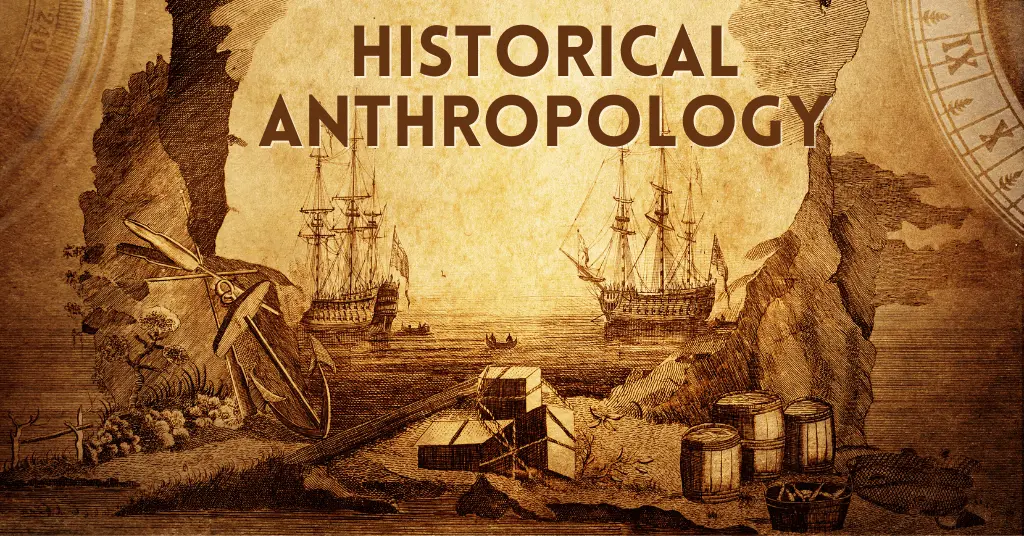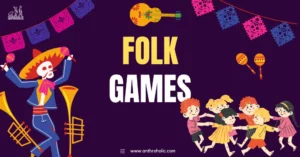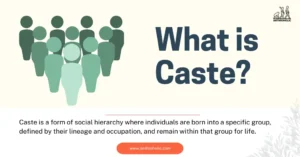Historical Anthropology
Historical anthropology is a subfield of anthropology that focuses on the study of human societies and cultures over time. It examines the ways in which cultural practices, beliefs, and values have changed and evolved throughout history and how they have been shaped by various historical factors such as economic, political, and social changes.

Studying the historical dimensions of human societies and cultures is crucial for several reasons. First, it helps us understand the roots of contemporary cultural practices and beliefs. By studying the historical development of a culture, we can better understand why certain practices and beliefs exist, and how they have been influenced by historical events and trends.
Secondly, historical anthropology can also shed light on the ways in which different societies and cultures have interacted and influenced one another over time. This can help us better understand the global interconnectedness of human history and the ways in which cultural exchange has shaped human societies and cultures.
Studying historical anthropology can also provide insight into the ways in which human societies have adapted and responded to major historical events such as wars, pandemics, and natural disasters. By examining how cultures have changed in response to such events, we can gain a deeper understanding of how societies and cultures are shaped by the historical circumstances in which they exist.
History of Historical Anthropology
The origins of historical anthropology can be traced back to the late 19th and early 20th centuries when anthropologists began to turn their attention towards the historical dimension of human societies and cultures. Prior to this period, anthropology had primarily focused on the study of contemporary non-Western societies.
One of the key figures in the development of historical anthropology was Franz Boas, who is often considered the founder of American anthropology. Boas argued that in order to fully understand human societies, anthropologists needed to take a historical perspective, tracing the development of cultural practices and beliefs over time.
Another important figure in the development of historical anthropology was Marcel Mauss, a French anthropologist who emphasized the importance of studying the historical context of cultural practices and rituals. Mauss argued that cultural practices could not be fully understood without taking into account their historical development and the ways in which they had been influenced by external factors.
Over time, the field of historical anthropology has continued to evolve and expand, drawing on a range of interdisciplinary approaches including archaeology, history, linguistics, and sociology. Today, historical anthropologists employ a variety of methods and techniques to study the historical dimensions of human societies and cultures, including the analysis of historical documents, ethnographic research, and archaeological excavation.
One of the key developments in the field of historical anthropology has been the growing recognition of the importance of incorporating the perspectives of historically marginalized groups, such as women, people of color, and LGBTQ communities. This has led to a greater emphasis on the study of social inequality and the ways in which historical power relations have shaped cultural practices and beliefs.
The Goals of Historical Anthropology
- Understand the historical development of cultural practices and beliefs
- Examine the ways in which historical events and factors have shaped human societies and cultures
- Analyze the ways in which different societies and cultures have interacted and influenced one another over time
- Explore the relationship between culture and power, and the ways in which historical power relations have shaped cultural practices and beliefs
Historical anthropology differs from other historical and anthropological disciplines in that it
- Emphasizes the study of cultural practices and beliefs over time, rather than focusing solely on contemporary cultures or historical events
- Draws on a range of interdisciplinary approaches, including archaeology, history, linguistics, and sociology, to understand the historical dimensions of human societies and cultures
- Recognizes the importance of incorporating the perspectives of historically marginalized groups, and examining the ways in which historical power relations have shaped cultural practices and beliefs
Examples of research questions that historical anthropologists may ask include
- How have religious beliefs and practices changed over time, and what historical factors have influenced these changes?
- How have gender roles and expectations evolved over time, and how have historical power relations shaped these roles and expectations?
- How have cultural practices and beliefs been influenced by interactions between different societies and cultures, such as through trade, migration, or colonization?
- How have historical events such as wars, pandemics, or environmental changes affected cultural practices and beliefs over time?
- How have historically marginalized groups, such as women or people of color, challenged or reshaped dominant cultural practices and beliefs over time?
Methods used in Historical Anthropology
Historical anthropologists employ a range of methods to conduct research on the historical dimensions of human societies and cultures. Here are some of the main methods used:
- Document Analysis: This involves the examination of historical documents such as letters, diaries, official records, and newspapers to understand cultural practices and beliefs of the past. Advantages of this method include the availability of rich historical sources, while limitations include the potential biases of the documents and the need to contextualize the documents within their historical and cultural contexts. An example of successful application of document analysis is the study of slavery in the United States, where researchers analyzed plantation records and slave narratives to understand the lived experiences of enslaved people.
- Ethnographic Research: This involves conducting interviews and observations with individuals in contemporary societies to understand the historical development of cultural practices and beliefs. Advantages of this method include the ability to gather rich and detailed data about cultural practices and beliefs, while limitations include the need to contextualize contemporary practices and beliefs within their historical context. An example of successful application of ethnographic research is the study of the historical development of gender roles in different cultures, where researchers conducted interviews and observations with individuals from different generations to understand how gender roles have evolved over time.
- Archaeological Excavation: This involves the excavation and analysis of archaeological sites to understand the historical development of cultural practices and beliefs. Advantages of this method include the ability to study material culture and the potential to uncover previously unknown historical information, while limitations include the potential for damage to the archaeological site and the need for careful interpretation of the archaeological evidence. An example of successful application of archaeological excavation is the study of the historical development of agriculture, where researchers excavated ancient farming sites to understand how agricultural practices evolved over time.
- Linguistic Analysis: This involves the analysis of language and its historical development to understand the historical dimensions of cultural practices and beliefs. Advantages of this method include the potential to uncover historical information from language use, while limitations include the need for expertise in linguistic analysis and the potential for misinterpretation of linguistic evidence. An example of successful application of linguistic analysis is the study of the historical development of kinship systems, where researchers analyzed the linguistic structures used to refer to kinship relations in different cultures to understand how kinship systems evolved over time.
Each method has its own advantages and limitations, and the choice of method depends on the research questions being asked and the availability of data. Successful applications of these methods can provide valuable insights into the historical dimensions of human societies and cultures.
Case Studies in Historical Anthropology
Case studies are an important tool in historical anthropology, allowing researchers to gain detailed insights into specific cultural practices and beliefs within their historical context. Here are some examples of case studies in historical anthropology and how they have contributed to our understanding of human societies and cultures:
- The Maya Civilization: Archaeological excavations of the Maya civilization in Mesoamerica have revealed a complex society with sophisticated mathematical, architectural, and agricultural knowledge. Through the analysis of hieroglyphic writing and artifacts, researchers have been able to understand the political and economic structures of the Maya, as well as their religious beliefs and practices. This case study sheds light on the development of pre-Columbian civilizations in the Americas and the complexity of these societies.
- The Witch Hunts of Europe: Historical documents and records have been used to examine the witch hunts that occurred in Europe during the Early Modern period. Researchers have analyzed the social, economic, and religious factors that led to accusations of witchcraft and the persecution of individuals, shedding light on the power dynamics and beliefs of this historical period. This case study highlights the importance of understanding the historical context of cultural practices and beliefs.
- The Navajo Code Talkers: The military in the United States enlisted the Navajo people to utilise their language as a code to relay secret information during World War II. Ethnographic research with Navajo veterans has shed light on the experiences of these code talkers and the ways in which their cultural practices and beliefs were utilized during wartime. This case study highlights the importance of incorporating the perspectives of historically marginalized groups in the study of human societies and cultures.
Case studies in historical anthropology provide valuable insights into specific cultural practices and beliefs within their historical context, allowing us to understand the complexity and diversity of human societies and cultures. These case studies can shed light on previously unknown aspects of human history and challenge our assumptions about cultural practices and beliefs.
Future directions of Historical Anthropology
Historical anthropology is a dynamic field that continues to evolve and address new research questions. Here are some possible future directions for historical anthropology:
- Interdisciplinary Collaboration: Collaborations between historians, archaeologists, linguists, and other scholars can provide a more holistic understanding of human societies and cultures. By combining different methods and approaches, researchers can gain a more comprehensive understanding of historical phenomena.
- Decolonizing Historical Anthropology: Historical anthropology has been criticized for perpetuating colonial legacies and marginalizing the perspectives of historically marginalized groups. Future research may focus on decolonizing the field by incorporating the perspectives and voices of these groups in the study of human societies and cultures.
- Addressing Contemporary Social and Cultural Issues: Historical anthropology can provide insights into contemporary social and cultural issues by examining their historical development. For example, the study of the historical development of race and racism can shed light on contemporary issues of inequality and social justice.
- Digital Humanities: Digital tools and methods can facilitate the analysis and interpretation of historical data, allowing researchers to uncover new insights and patterns. For example, the use of digital mapping and visualization tools can help researchers better understand spatial patterns in historical data.
Historical anthropology has the potential to contribute to our understanding of contemporary social and cultural issues by examining their historical development. Interdisciplinary collaboration and a focus on decolonizing the field can ensure that historical anthropology continues to evolve and address new research questions in meaningful ways.
Conclusion
In conclusion, historical anthropology is a field that combines the methods and theories of anthropology and history to study human societies and cultures in their historical contexts. The field has evolved over time, with key figures and methods contributing to our understanding of past societies and cultures. Historical anthropology aims to uncover the ways in which culture, society, and history are intertwined and to challenge our assumptions about the past.
Methods used in historical anthropology include archival research, oral history, ethnography, and archaeology. Each method has its advantages and limitations, and researchers may choose to combine methods to gain a more comprehensive understanding of historical phenomena.
Case studies in historical anthropology provide valuable insights into specific cultural practices and beliefs within their historical context, allowing us to understand the complexity and diversity of human societies and cultures. By examining these case studies, researchers can shed light on previously unknown aspects of human history and challenge our assumptions about cultural practices and beliefs.
Future directions for historical anthropology may include interdisciplinary collaboration, decolonizing the field, addressing contemporary social and cultural issues, and the use of digital tools and methods.
Suggestec Articles
References
- Kroeber, A. L. (1917). The Superorganic. American Anthropologist, 19(2), 163-213. https://doi.org/10.1525/aa.1917.19.2.02a00040
- Wolf, E. (1982). Europe and the People Without History. Berkeley, CA: University of California Press.
- Comaroff, J. L., & Comaroff, J. (1992). Ethnography and the Historical Imagination. Boulder, CO: Westview Press.
- Trouillot, M.-R. (1995). Silencing the Past: Power and the Production of History. Boston, MA: Beacon Press.
- Asad, T. (1986). The Concept of Cultural Translation in British Social Anthropology. In J. Clifford & G. E. Marcus (Eds.), Writing Culture: The Poetics and Politics of Ethnography (pp. 141-164). Berkeley, CA: University of California Press.
- Appadurai, A. (1986). Introduction: Commodities and the Politics of Value. In A. Appadurai (Ed.), The Social Life of Things: Commodities in Cultural Perspective (pp. 3-63). Cambridge, UK: Cambridge University Press.
- Borofsky, R. (Ed.). (1994). Assessing Cultural Anthropology. New York, NY: McGraw-Hill.
- Glick Schiller, N., Basch, L., & Blanc-Szanton, C. (1992). Towards a Transnational Perspective on Migration: Race, Class, Ethnicity, and Nationalism Reconsidered. New York, NY: New York Academy of Sciences.
- Bloch, M. (1953). The Historian’s Craft. New York, NY: Vintage.
- Bloch, M. (1961). Feudal Society. Chicago, IL: University of Chicago Press.
- Thompson, E. P. (1963). The Making of the English Working Class. New York, NY: Vintage.
- Auslander, M., & Yanagisako, S. J. (Eds.). (2008). Ethnographies of Historical Anthropology: The Use of Archaeology in the Study of American Culture. Walnut Creek, CA: Left Coast Press.
- Borofsky, R. (Ed.). (1994). Assessing Cultural Anthropology. New York, NY: McGraw-Hill.
- Ginzburg, C. (1980). Cheese and the Worms: The Cosmos of a Sixteenth-Century Miller. Baltimore, MD: Johns Hopkins University Press.
- Hobsbawm, E. J., & Ranger, T. O. (Eds.). (1983). The Invention of Tradition. Cambridge, UK: Cambridge University Press.
- Lowenthal, D. (1985). The Past Is a Foreign Country. New York, NY: Cambridge University Press.
- Stocking, G. W. (Ed.). (1983). Observers Observed: Essays on Ethnographic Fieldwork. Madison, WI: University of Wisconsin Press.
- Thompson, E. P. (1967). Time, Work-Discipline, and Industrial Capitalism. Past and Present, 38, 56-97. https://doi.org/10.1093/past/38.1.56
- Auslander, M., & Yanagisako, S. J. (Eds.). (2008). Ethnographies of Historical Anthropology: The Use of Archaeology in the Study of American Culture. Walnut Creek, CA: Left Coast Press.
- Clifford, J., & Marcus, G. E. (Eds.). (1986). Writing Culture: The Poetics and Politics of Ethnography. Berkeley, CA: University of California Press.
- Comaroff, J. L., & Comaroff, J. (1993). Introduction: In the Realm of the Ancestors. In J. L. Comaroff & J. Comaroff (Eds.), Modernity and Its Malcontents: Ritual and Power in Postcolonial Africa (pp. 1-23). Chicago, IL: University of Chicago Press.
- Evans-Pritchard, E. E. (1940). The Nuer: A Description of the Modes of Livelihood and Political Institutions of a Nilotic People. Oxford, UK: Clarendon Press.
- Geertz, C. (1973). The Interpretation of Cultures: Selected Essays. New York, NY: Basic Books.
- Hobsbawm, E. J. (1962). The Age of Revolution, 1789-1848. New York, NY: Mentor.
- Kuklick, H. (1991). The Savage Within: The Social History of British Anthropology, 1885-1945. Cambridge, UK: Cambridge University Press.
- Marcus, G. E., & Fischer, M. J. (1986). Anthropology as Cultural Critique: An Experimental Moment in the Human Sciences. Chicago, IL: University of Chicago Press.
- Stocking, G. W. (1968). Race, Culture, and Evolution: Essays in the History of Anthropology. New York, NY: Free Press.
- Stocking, G. W. (1992). The Ethnographer’s Magic and Other Essays in the History of Anthropology. Madison, WI: University of Wisconsin Press.
- Trouillot, M.-R. (1991). Anthropology and the Savage Slot: The Poetics and Politics of Otherness. In R. Fox (Ed.), Recapturing Anthropology: Working in the Present (pp. 17-44). Santa Fe, NM: School of American Research Press.
- Wolf, E. R. (1966). Peasant Wars of the Twentieth Century. New York, NY: Harper & Row.
Recommended Further Reading
- Asad, T. (Ed.). (1973). Anthropology and the Colonial Encounter. New York, NY: Humanities Press.
- Fabian, J. (1983). Time and the Other: How Anthropology Makes Its Object. New York, NY: Columbia University Press.
- Kuklick, H. (1996). The Savage Within: The Social History of British Anthropology, 1885-1945. Cambridge, UK: Cambridge University Press.
- Marcus, G. E., & Fischer, M. J. (1986). Anthropology as Cultural Critique: An Experimental Moment in the Human Sciences. Chicago, IL: University of Chicago Press.
- Stocking, G. W. (Ed.). (1995). The Ethnographer’s Magic and Other Essays in the History of Anthropology. Madison, WI: University of Wisconsin Press.
- Stocking, G. W. (Ed.). (1996). Volksgeist as Method and Ethic: Essays on Boasian Ethnography and the German Anthropological Tradition. Madison, WI: University of Wisconsin Press.



